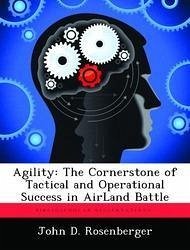
Seeking a Theory of Tactical Intelligence to Support the AirLand Battle
Versandkostenfrei!
Versandfertig in über 4 Wochen
52,99 €
inkl. MwSt.
Weitere Ausgaben:

PAYBACK Punkte
26 °P sammeln!
This study contrasts two opposing theories which have shaped the U.S. Army's tactical intelligence process since 1940. One theory holds that the best kind of tactical intelligence is predictive in nature. The other theory states that tactical intelligence should merely describe the current tactical situation. The monograph evaluates three combat intelligence systems which emerged from these theories during and after World War II. The Intentions System purported to predict enemy actions based upon suspected enemy intentions. The Capabilities System promised to predict enemy action based upon hi...
This study contrasts two opposing theories which have shaped the U.S. Army's tactical intelligence process since 1940. One theory holds that the best kind of tactical intelligence is predictive in nature. The other theory states that tactical intelligence should merely describe the current tactical situation. The monograph evaluates three combat intelligence systems which emerged from these theories during and after World War II. The Intentions System purported to predict enemy actions based upon suspected enemy intentions. The Capabilities System promised to predict enemy action based upon his capabilities. The Descriptive System stated that prediction is irrelevant, and that the decision-maker needs only a clear description of the present battlefield. The monograph draws heavily on observations made by World War II senior commanders, general officer boards, and Army Ground Force Observer teams. From this study one could conclude that: the Army's command and staff planning sequence demands a predictive approach to intelligence, whether prediction is possible or not; predictive intelligence systems, again in use today, hide reality from the decision-maker by constructing estimates based upon successive assumptions; and, when making his decision, the commander is best served by relying on fact rather than assumption. The study concludes that the U.S. Army should discard the predictive theory of tactical intelligence and adopt a descriptive approach.














